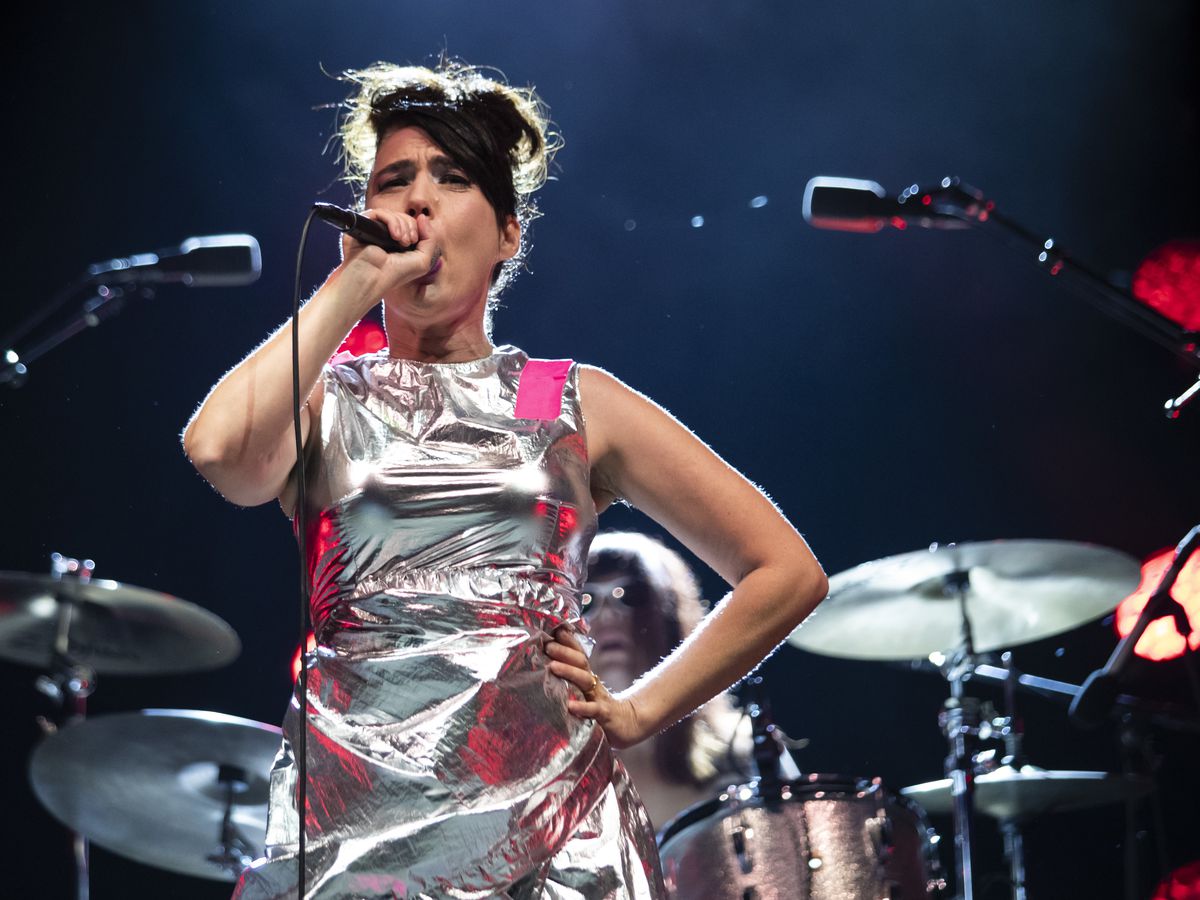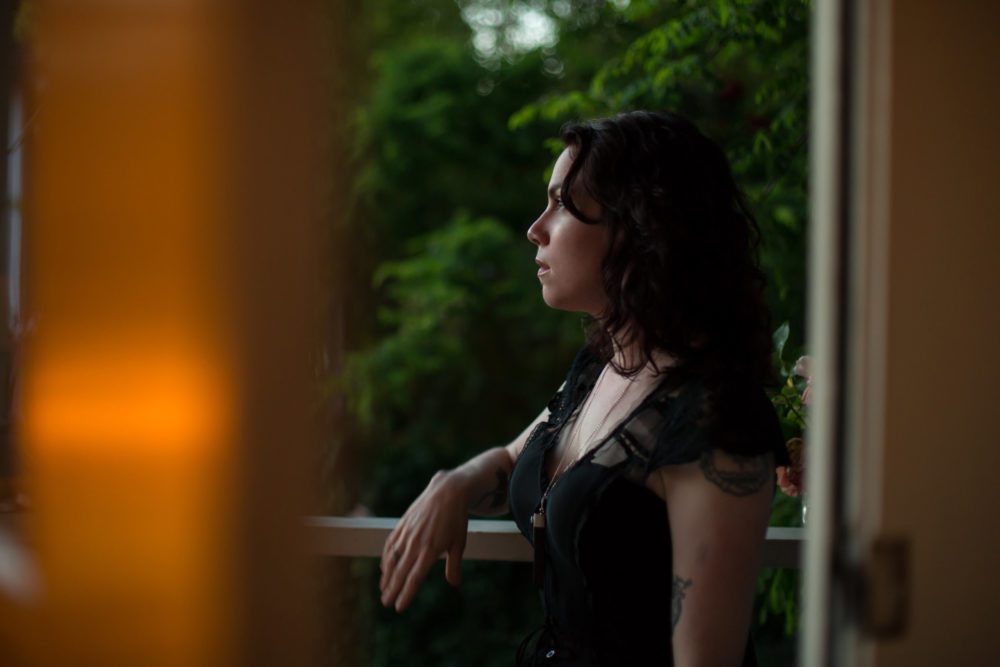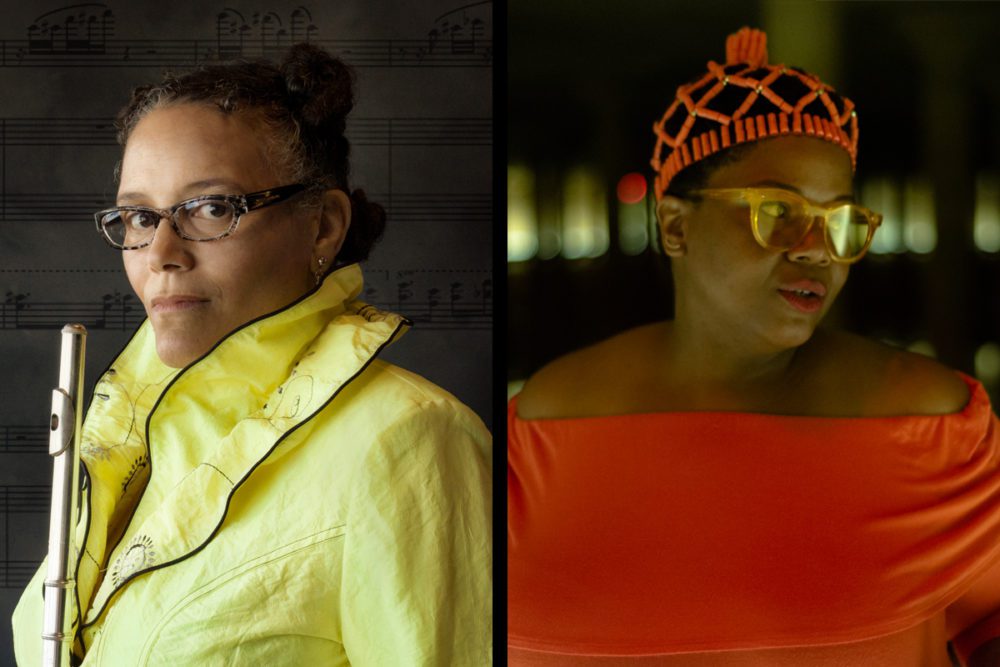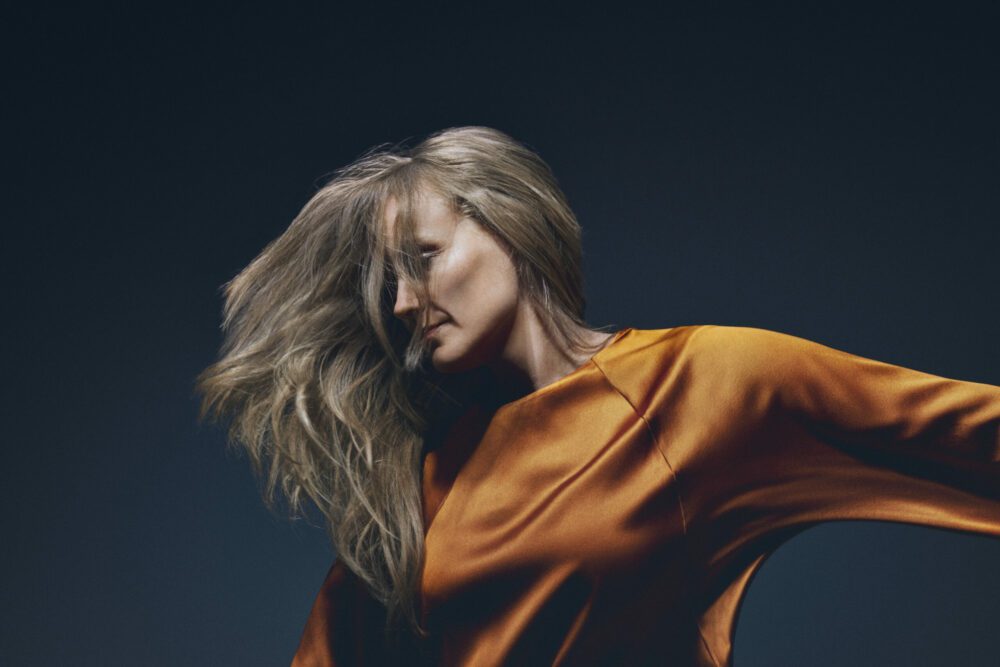
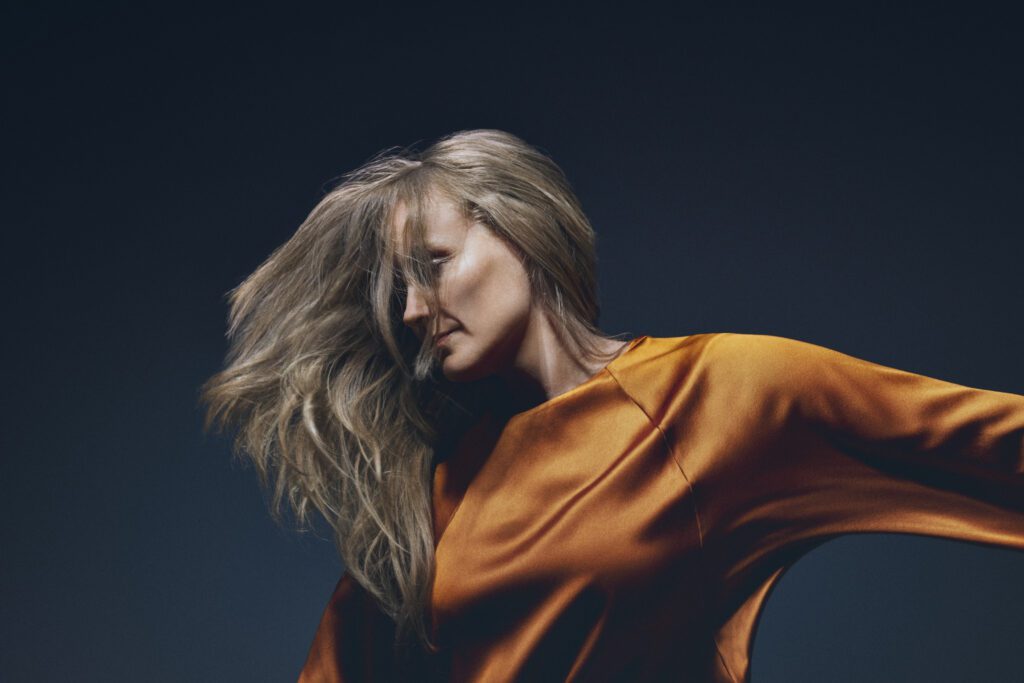
With ten albums under her belt, (including original material, live recordings, and a collection of duets), prolific Scandinavian artist Ane Brun has been compared to a haunting Dolly Parton (sans drawl). Her sophomore record A Temporary Dive earned her the Norwegian Grammy for Best Female Artist. She’s also had the honor of being a featured performer at the Nobel Prize Dinner and Ceremony. Since 2001, she has lived in Stockholm Sweden, writing, recording, and running her own independent label Balloon Ranger Records. That creative freedom allowed her to release not one, but two phenomenal records in 2020: After the Great Storm in October, and How Beauty Holds the Hand of Sorrow in November, originally intended as a double album.
Ane Brun’s music lives in a cinematic world of intimate, immediate, raw sonic moments. Brun crafts songs to sit alone with in your bedroom, while you cocoon and wrap the weight of life’s big questions around yourself like a blanket. Themes span frustration over the state of the world, the nuances in the battlefield of love and heartache, isolation and loneliness, battling inner demons, and sleepless nights. Taken together, the albums score the full spectrum of human emotion through both sparse minimalist arrangements, and a ’90s-indebted trip-hop sound.
We spoke with Ane Brun about the heightened connection to fans via the digital realm, her previous struggle and recovery from lupus, coping with the death of her father, and how certain songs metamorphosed into a more intimate creation.
AF: How have you been coping with this unpredictable time?
AB: My year started off okay. I’ve been living in Stockholm, Sweden for 20 years, but a couple years ago, I met a guy from Norway and started commuting a little bit. The week before the lockdown in mid March, I was in Oslo to celebrate my birthday. Two days later, they closed the borders in Norway. If I left, it was uncertain if I’d be able to return so I decided to stay at my boyfriend’s. Weeks passed, everything just turned it upside down. Eventually I found a student on Facebook to drive my car with my studio to Norway. Now I’ve got my studio, and we had just recorded all the big music sessions in the fall. They were done, but I still had to record some harmonies, backing vocals, adlibs, and mix them. We were literally in the middle of the production of the album. I sat down in my new “studio” and just started listening through everything.
AF: How did the record evolve from the circumstances of the pandemic?
AB: Everything was finished remotely – the mixing in London and Stockholm. What happened was that I got the chance to really listen through the material. Everything had gone really fast in the recording process, and it was really stressful. All of a sudden, I could hear it in a different way, and some of the songs I wasn’t happy with I managed to rearrange and actually be happy with. I thought I was making one album, After The Great Storm, with lots of production and drums and beats. But through this process of digesting the songs, I actually rearranged quite a few of them to be more intimate. All of a sudden, I was sitting there with two albums, because the songs were in two different modes. The pandemic actually indirectly created the double album. Through those months to come, I was working from my boyfriend’s house, and I decided, “Okay, I need to just make the best of this.”
AF: How did you connect with fans to promote the music during lockdown?
AB: I started focusing on making content, and producing videos remotely. We did 12 single releases this year. Every release was a new song trying to tell a story, connecting with my fans in different ways, by being more real, more authentic on Instagram. I took Instagram really seriously. I just felt really intuitively that there’s no place for bullshit right now. People were vulnerable, and they just needed to feel. In live chats, I felt really connected. I think I changed my tone from being a bit more distant on social media, to being more authentic and direct. It has been quite nice, to just be yourself more. You don’t have to think so much about what you say. I did some fan meetings online. I invited people into digital rooms, to listen to new songs and talk about them. It was really special, because it was in that period in April when everyone was on lockdown. We recorded the screen of these sessions where people met online, and it’s really actually very heartwarming to watch, because people are sitting at home alone. And you can see them, and they’re all over the world. That was a pretty special moment. I made my own press photos with a plant lamp. I tried to do as much as I could from home. When I look back at this year, the silver lining has been that I have had these two albums to work with, because that became my positive driving focus.
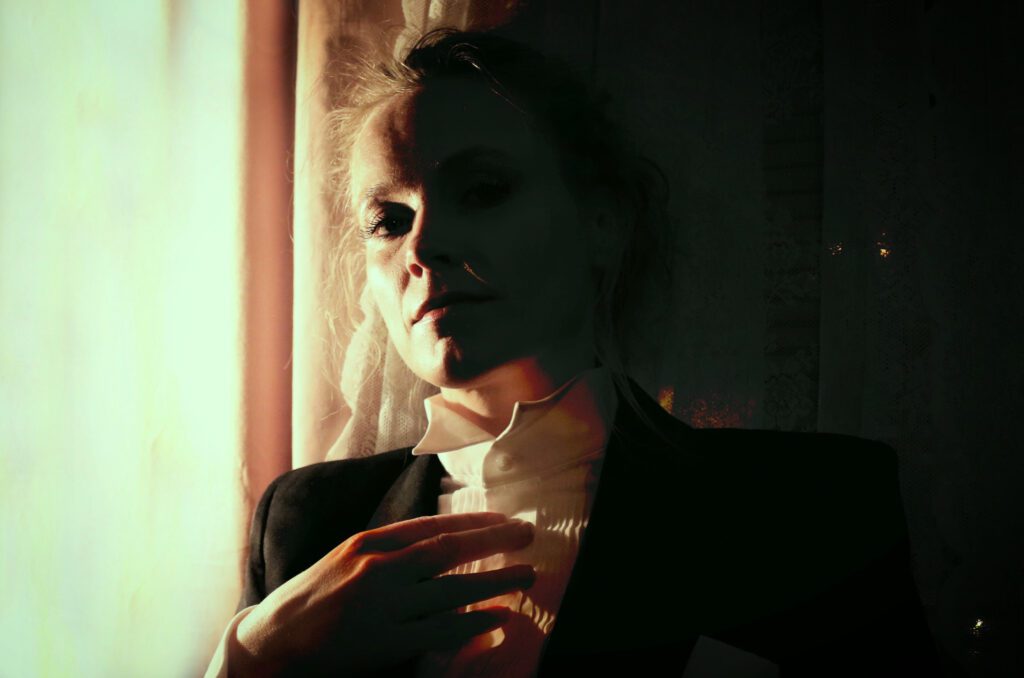
AF: Growing up with music in your home, was it second nature to merge your domestic life and your musical world?
AB: I grew up in this town where I am now, and my mom was a piano and vocal teacher. She had students at home a lot. And I learned a little bit of piano from her, and played some classical pieces when I was a teenager. But I was a rhythmic gymnast, and a sports person. I was really focused on my team, not being a musician at all. My sister became a musician pretty early, but I didn’t start playing music until I was 21. And that’s when I picked up a guitar and started writing songs. When I did actually pick up the guitar and start singing, I realized I’ve been singing all my life, just because we were always singing at home. It was very natural to me. And I’ve been watching my mom on stage performing, and singing. I feel my mother’s influence all over my music. I take from the standard kind of jazz, and Norwegian folk, a crossover kind of thing that she was doing. During the pandemic, it felt very natural to me. A natural environment for me is hearing my mother playing the piano and singing in the house.
AF: Where did you find private spaces and time frames to record remotely while co-habitating with someone?
AB: Well, as I said, most of the album was already recorded. There were not many lead takes I had to do. I recorded a lot of backing vocals, which doesn’t really demand the same kind of focus and privacy. My boyfriend had his own room to work, and I was in the living room. The challenge was that there’s a subway pass away every 10 minutes. One of the songs on the album, “Meet You At The Delta,” which is an acoustic guitar and vocals, I recorded that as a live take. [Some] of the songs I rearranged to be more intimate [are] actually cut and glued together, because in the middle of the first take, there was a big train coming. I had to comp the takes. That was a challenge, because 10 minutes is not a long time when you’re working. When I did the vocals for “Closer,” I think I just opened up the wardrobe in the hallway and just kind of stuck my head in, held the microphone, stuffed through the winter jackets and sang in there – it was an isolated chamber. I just found my way. I played a sketch piano, and sent it to my pianist in Stockholm. He recorded a real piano take, sent it back, and I put on vocals. So we did a lot of those remote sessions.
AF: What musical influences inspire these bodies of work?
AB: When I’m making an album, I listen a lot to production. I have a playlist where I just put in a lot of songs. I listen to new albums, to get inspired about the world I want to connect to. The best music from the ’90s – Massive Attack, Portishead, UNKLE. I just wanted to create this kind of digital, electronic world, with analog influences, because a lot of the trip-hop from the ’90s is very cool, it’s very warm, and it has a presence in it that that makes it still so good and relative. I wanted to create that kind of world with my voice and my sound. I had done a lot of work with a Symphonic orchestra in Stockholm; we released the album a couple years ago. I wanted to bring in those big strings as well. I had this vision of a big space with lots of warmth, and raw drums. We wanted to have drums that sounded like they were programmed but were actually played. We had two drummers in the studio, one acoustic and one digital. We kind of mixed it up and made a hybrid sound. That was the idea – I had no plan to make an acoustic singer-songwriter album. I thought I had a break from that in a way. But so many of the songs kind of wanted to be that. I almost always feel that the song has to decide. It’s the message of the song, it has to decide how they’re going to end up. If I feel that they have to be whispered, they have to be whispered, so that’s what I did for those songs.
AF: Where did you come up with the title How Beauty Holds The Hand of Sorrow for the album? What does the title for After the Great Storm reference?
AB: How Beauty Holds The Hand of Sorrow is actually the original title idea that we had for the album. It sums up a lot of songs. It’s kind of like the contrast of being human in a way, if you’re open and feel both sorrow and happiness. If you close down, you’ll just be in the middle. It came from the experience of losing my father and the grief that I went through. In experiencing that there were a lot of things that came to me during that period that also were positive. I experienced beauty in this – this was an insight that I had – I didn’t really expect it to happen. And After The Great Storm was a second alternative for the album. Since that song is so big, it kind of fits the title. It’s quite funny now, when I am actually on tour, we’re going to be on the other side of this storm I hope. I have lupus, the [auto-immune] disease – it’s been sleeping for seven years now. But in 2012, I had it like a big flare up, I was in the hospital, and it was very bad. And when I got out of that, and felt better, I just got this rush. It was like I was just walking around feeling so happy. And then the world was just a beautiful place. It’s almost like I was in love with the world because it was like a new energy. I felt connected to everyone. I just went around feeling love. It’s really quite strange.
AF: Can you talk a bit about running your own label, Balloon Ranger Records?
AB: Since my first album I’ve been independent. I was lucky because I met my manager, the year of the first album, and I had already decided to be independent because Ani DiFranco was my big inspiration. When my manager came in, he just wanted to help me, and we started the label. He got me distribution, and took care of a lot of the business. Since then he’s been my right hand. I have one more employee now. They take care of administration. We just kind of pretend we’re a big label, we just do whatever a big label would do and have fun with it. And I’m so grateful that I am established as a musician, and can afford it. I can use my own resources. If I want to, I can release 12 singles in a year. I can just play around with things and do things whenever. It’s very inspiring. A lot of people ask me about this as musicians themselves, like what do you think I should do? Should I be indie? And it’s not for everyone. Because I’m an entrepreneurial kind of person as well, I have that in me, I have the drive and [I am] open and talking to people and all that. If you’re going to run your own label, you have to be a bit of a self-starter. If you feel that you want to do those things I recommend it. But the best thing is to find someone to help you do it.
AF: How did you come up with the title?
AB: It’s from a song from my 2005 album, which was [inspired by] a dream. In the dream there was a male ranger, a man on a horse, and I was a balloon of helium, and he was pulling me down, collecting balloons. I have some very strange dreams!
AF: What would you like fans to take away from the music?
AB: I’ve been making music for 17 years. After all these years, I’ve become more conscious about what my music can give to people, and what’s the message. In the first few years I really did just write out of my own drama. But there came a time when I started thinking about what the listener would think. I always think about the person who is going to listen, and ask if this is a message that I want people to have. A friend of mine told me that she thought these albums are a bit like I am my own daughter somehow. It’s the two albums written after a very difficult time with my dad and everything that happened, and the music helped me through these things. Through that, I can hopefully help other people. That’s how I feel about it now. And I hope the music can be company in this really weird year and months to come. Because I feel that music can be balanced, it feels like it has a presence. If I’m in a room and I put on music, it’s almost like there’s someone there. It has a presence that gives me company, and it makes me connect to myself. And I think that if the music resonates, it can help you get in touch with what you’re feeling and thinking, and maybe give you a new perspective and bring you forward. Now that the albums are out, I get more personal messages; I’ve got a lot of messages this year from all the songs that I’ve released; they tell me stories about how the music has helped them. I think that people really need music now, you know. I just hope it can be company and support – or offer a good time! Some of the songs are quite bouncy as well.
Follow Ane Brun on Facebook and Instagram for ongoing updates.

